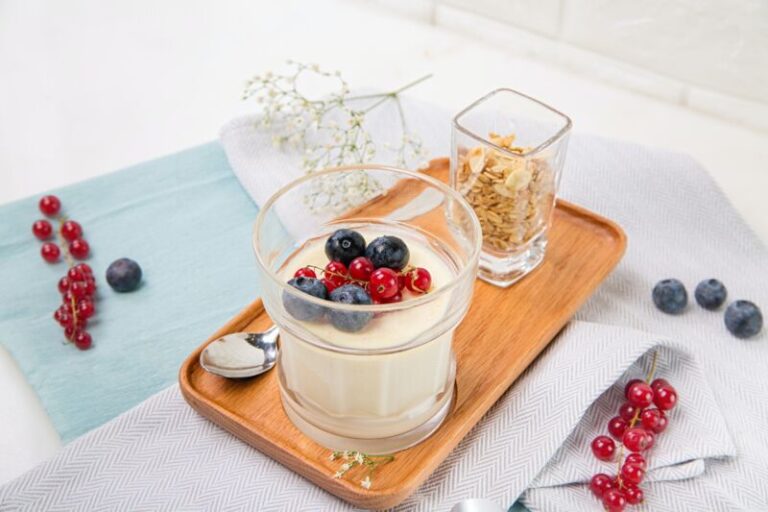What Vegetables Have Seeds? 19 Vegetables with Seeds
As a home cook and gardener, I often find myself dealing with the tedious task of deseeding vegetables. Scooping and picking out hundreds of tiny seeds can be quite frustrating and time-consuming! However, as I’ve learned more about the culinary and nutritional benefits of many vegetable seeds, I’ve gained a new appreciation for these miniature nutrient powerhouses.
In this article, I’ll share a comprehensive guide to some of the most common vegetables with seeds. Understanding the diverse uses and characteristics of various vegetable seeds can open up new possibilities in the kitchen, garden, and beyond!
A World of Veggie Seeds: An Introduction
First, what exactly are vegetable seeds? Seeds are the reproductive units of plants. They contain embryonic tissue that allows new plants to grow when given the right conditions.
Many vegetables actually develop from the fertilized ovaries of flowers. Once pollinated, the ovary swells into what we commonly call a fruit or vegetable. Inside this plant tissue, seeds then form and mature until the fruit or veggie is ripe.
When we eat seeded veggies, we’re often consuming this future plant generation without even realizing it! However, vegetable seeds can provide nutritional value and be used in many creative ways.
So which vegetables contain edible seeds? Let’s explore some of the most common seed-bearing veggies.
List of 19 Vegetables with Seeds
Tomatoes
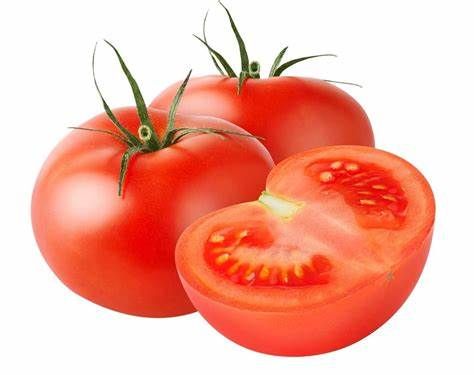
Tomatoes are one of the most popular seeded vegetables. The gelatinous sack surrounding the seeds contains nutrients and has many culinary uses once the seeds are removed. But the seeds themselves can also be consumed.
Tomato seeds are an excellent source of dietary fiber. Just one tablespoon of seeds contains over 1.5 grams of fiber, supporting digestive and heart health. Seeds are also rich in protein, magnesium, potassium, and phytochemicals like flavonoids.
Crunchy tomato seeds provide great texture contrast when added to dishes like salads, pasta, pizza, soups, and sandwiches. Their nutty, herbal flavor pairs well with Mediterranean ingredients. For an easy snack, simply rinse and roast tomato seeds until crispy.
There are over 10,000 varieties of tomatoes, from tiny currant types to massive beefsteak. No matter the size or color, seeded tomatoes offer a nutrient boost from their edible interior gems.
Eggplants
Eggplants are an underappreciated source of edible seeds. The small brown seeds have an earthy taste reminiscent of eggplant flesh. They’re rich in dietary fiber, protein, vitamins like folate, and minerals including iron, magnesium, and manganese.
Eggplant seeds can be used to add texture and visual appeal when sprinkled on items like pizza, stir fries, and salads. They also make an oil with antioxidant properties.
Try incorporating toasted eggplant seeds into pestos, dressings, and sauces for a nutritious boost. Their small size allows them to blend smoothly into many recipes.
With over 30 eggplant varieties, from tiny Indian to giant Italian types, there are so many kinds to cook with. Don’t throw away those little seeds next time – they could be the next superfood!
Cucumbers

Cucumbers are another vegetable rich in seeds that often get tossed. But their green seeds are completely edible and make nutritious additions to meals.
Cucumber seeds provide dietary fiber, vitamin K, magnesium, potassium, and antioxidants. They have a nice crunchy texture and mild, refreshing taste like the cucumber flesh.
Sprinkle roasted and salted cucumber seeds onto salads, yogurt bowls, sandwiches, and cold soups for extra flavor and nutrition. The seeds can also be blended into dressings, juices, and smoothies.
In addition to being eaten fresh, cucumbers are commonly pickled, fermented, and juiced – versatile preparation methods that work well with the seeds intact.
So next time you slice up a cucumber, save those seeds for later use!
Carrots
Carrot tops are routinely lopped off before eating the tapered orange roots. But inside those leafy greens are delicately flavored seeds with their own uses.
The tiny carrot seeds have an earthy, nutty taste reminiscent of the vegetable itself. They provide fiber, vitamin E, magnesium, potassium, and antioxidants.
Sprinkle the minuscule seeds onto soups, salads, and roasted veggies for extra crunch and visual appeal. Their petite size allows the seeds to be easily incorporated into recipes. You can even grind seeds into flours or use as a substitute for caraway seeds.
Carrot seeds can also be planted directly into soil to grow nutrient-dense root crops. Each seed contains the potential beginnings of a future carrot plant!
Peppers
Like tomatoes, sweet bell peppers and spicy chile peppers contain edible seeds encased in the inner membranes. Hot varieties like jalapeño, habanero, and cayenne are known for their fiery seeds.
But don’t let their spiciness scare you away! Pepper seeds provide dietary fiber, vitamin E, magnesium, and antioxidants. Their intense flavor makes them an ideal seasoning.
Try incorporating a few crunchy seeds into salsas, tacos, stir fries, and soups for an extra kick of heat and texture. You can also roast and eat seeds straight as a healthy snack.
In addition to their heat, pepper seeds contribute fruity, nutty, and smoky notes to dishes. Different colored peppers like red, yellow, orange, and purple contain their own unique blend of flavors and nutrients as well.
Cauliflower
Contrary to popular belief, cauliflower contains dozens of edible seeds embedded within each dense white head. The tiny seeds can be roasted for a crunchy snack or ground into cauliflower seed flour for gluten-free and paleo baking.
Studies show cauliflower seeds are rich in heart-healthy fats and compounds like sinapic acid and protocatechuic acid which provide antioxidant and anti-inflammatory benefits.
The seeds can also be cold-pressed into an oil high in omegas. Use this vitamin-rich oil for cooking, DIY cosmetics, or making cauliflower seed butter. The seeds even produce a nutritious milk when blended with water.
Cauliflower seeds are very versatile “super seeds” that deserve a spot in the kitchen!
Beets
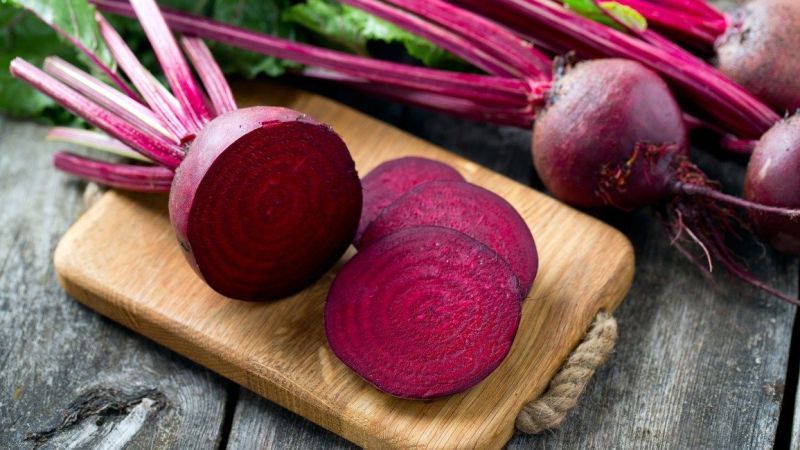
Beets are not the most obvious seeded vegetable. But within each beet’s rough, hairy skin are one to four edible seeds called kernels.
These reddish-brown seeds have an earthy, nutty taste and chewy texture. They provide fiber, folate, manganese, and potassium.
To access the seeds, roast whole beets until tender, then gently pry open. The seeds can be eaten straight as a snack or added to salads, toast, hummus, and more. Kids love helping harvest these surprise “treasures” from inside beets!
The seeds are also viable for planting. Each kernel can produce a brand new beet plant. Beet seeds are the perfect way to keep the garden going year after year.
Lettuce
Lettuce plants bloom into yellow flowers that self-pollinate, forming seeds. These seeds are edible whether harvested from the garden or sprouted at home from a seed packet.
Lettuce seeds have a slightly bitter, nutty taste that lends well to both sweet and savory dishes. Their small size makes them easy to sprinkle onto soups, salads, pizza and more as a garnish and flavor booster. The seeds can also be pressed into oils for cooking or homemade lotions.
When sowing lettuce seeds in the garden, choose quick-growing varieties like Black-Seeded Simpson. Frequent harvesting of leaves and flowers ensures a steady yield of seeds for the kitchen and future planting.
Beans
Beans are one of the most universally cherished and consumed seeds. Kidney, pinto, black, fava – beans take countless forms, but all begin as seeds.
Bean seeds are packed with protein, fiber, iron, folate, potassium, and more. They have a mild, starchy, slightly nutty flavor.
Popular for tacos, chili, soups, and rice dishes, beans provide endless meal possibilities. They take well to global seasonings and combine with veggies, grains, meat and more.
With proper storage, these pantry staple seeds can last for years. Investing in bean seeds, whether for cooking or gardening, is investing in food security.
Okra
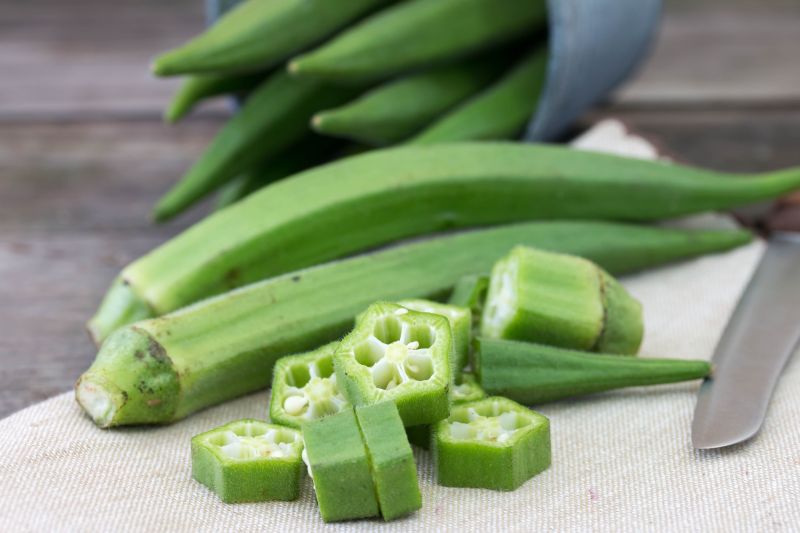
Though okra is beloved in the American South, many people don’t realize the green, fuzzy okra pods harbor edible white seeds.
The small okra seeds have a mild flavor and pleasant crunch when roasted or fried. They contain healthy fats, protein, magnesium and more.
Try incorporating the seeds into soups, curries, stir fries and tacos for added texture. Or ferment okra pods whole to form a nutritious probiotic-rich condiment with the seeds still intact.
Okra thrives in hot conditions, making it an ideal summer garden crop. Let those beautiful flowers mature into pods and collect seeds for next year’s planting!
Squash
Varieties of winter squash like butternut, acorn and pumpkin bear dozens of flat, white seeds within the pulpy flesh and strings. These seeds are completely edible.
When rinsed and roasted, squash seeds take on a crispy, nutty texture and concentrated flavor. Season them with salt, spices, or sweet flavors. They make great salad toppers and snacks.
The seeds can also be pressed into a healthy cooking oil. But another option is saving them to plant. Squash easily cross-pollinate, leading to new hybrid varieties when grown from seed.
However you use them, squash seeds are little gems providing sustenance, surprise, and plenty of nutrition.
Avocado
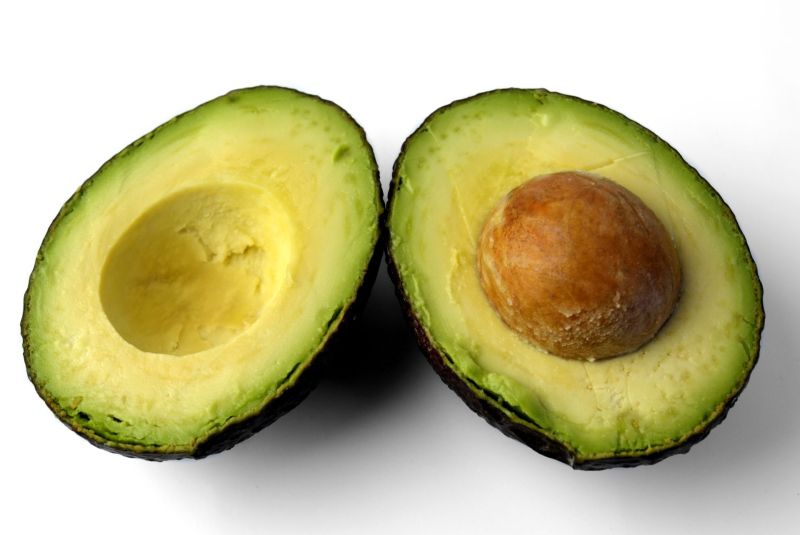
Technically a fruit, avocados grow one large inedible pit rather than smaller soft seeds. But this avocado pit, and the flesh immediately surrounding it, is entirely edible.
The pit contains insoluble fiber, antioxidants, and beneficial phytochemicals. It adds smooth creaminess when blended into smoothies, ice cream, and even chocolate truffles!
Beyond eating it, the seed can be propagated to grow new avocado trees or chopped and brewed into nutritious avocado seed tea. The seed also makes a great, all-natural plant-based dye.
Don’t throw away that big avocado pit – it has way more uses than you might think!
Green Beans
The tender pods of green beans harbor tiny immature seeds within. Although small, these green bean seeds provide a nice crunch and pop of flavor.
Sprinkle them onto salads, rice dishes, pasta, and soups for extra texture and nutrition. The raw seeds have a fresh, grassy, nutty taste that complements many ingredients.
If you’re looking to grow green beans, simply allow some pods to fully ripen on the vine to obtain viable seeds for planting. Dry and store the seeds properly to maintain viability.
Those petite seeds within snap beans pack way more potential than their size suggests!
Coccinia
Lesser known but rising in popularity are coccinia seeds. Coccinia is a tropical vine bearing small cucumber-like fruit. When ripe, these fruits contain dozens of small, flattened white seeds.
Native to India, coccinia seeds are rich in antioxidants and have been used traditionally as a treatment for diabetes. Studies suggest they also have antimicrobial properties.
The seeds have a mild flavor and pleasant crunch. Try incorporating them into chutneys, curries, stir fries, and salads for extra nutrition and texture.
As exotic superfoods like coccinia become more mainstream, keep an open mind and palate!
Muskmelons
Summertime muskmelons like cantaloupe are famous for their perfumed orange flesh. But inside the rind are dozens of flat, oval seeds that are also edible.
Muskmelon seeds provide fiber, protein, and micronutrients like magnesium, phosphorus, and zinc. They have a nice crunchy texture and sweet, musky flavor when roasted.
Try incorporating melon seeds into trail mixes, salads, baked goods, and smoothies. They can also be ground into nutrient-dense muskmelon seed butter or blended into flavorful pesto.
Let this seeded melon nourish your body, inside and out!
Peas

It’s easy to see why peas are synonymous with seeds – each pod contains several small, spherical pea seeds encased in a protective skin.
Fresh and dried peas provide protein, fiber, folate, iron, zinc, and more. Pea shoots and microgreens are also highly nutritious.
Beyond their stellar nutrition, pea seeds are incredibly versatile in cooking: tossed into fried rice, pureed into soups, mixed into salads, and more. Their slightly starchy, earthy flavor pairs well with many ingredients.
Pea seeds are perfect for planting too. Choose fast-growing varieties like snap peas and harvest the ripe seeds once flowering concludes. Within a couple months, each seed will multiply into bushy pea vines.
Garlics
You may be surprised to learn that garlic – that pungent, onion-like bulb – produces edible seeds when allowed to flower. Each clove can yield up to four tiny garlic seeds.
Though small, these garlic seeds pack a potent, hot, garlicky flavor when eaten raw or roasted. They provide fiber, manganese, vitamin B6 and antioxidant compounds like allicin.
Incorporating the seeds into dishes like soups, stir fries, and salad dressings allows you to harness that sharp garlic kick. Since they are so strong, just a few seeds can provide ample flavor. The seeds also make great additions to spice blends and ferments.
Allow garlic to fully mature in the garden bed to obtain these powerful seeds year after year.
Pumpkin
Pumpkin seeds, also known as pepitas, are one of the most popular edible seeds. While technically a fruit, pumpkins are used as vegetables in sweet and savory recipes.
The flat green pumpkin seeds encased in the stringy interior provide stellar nutrition: protein, magnesium, zinc, copper, manganese, phosphorus, antioxidants, and more.
Pepitas make for a crunchy, satisfying snack when roasted and seasoned. But they can also be incorporated into granola, salads, pesto, mole sauce, desserts, and more to boost nutrition.
With so many ways to use these nutrient-dense gems, pumpkin seeds are a true kitchen superstar.
Bottle Gourd
Gourds like calabash and bottle gourd bear large, white edible seeds within their hard shells. The seeds have a mild, nutty flavor when roasted.
Blend gourd seeds into bread dough for a nutritious, protein-packed bake. Or try incorporating them into tacos, soups, granola bars, trail mixes, and more for a healthy crunch.
You can also let gourds dry and collect the seeds to plant the following season. Gourds require ample space to grow but produce abundantly when cared for properly.
Don’t toss those big gourd seeds – they are multi-purpose gems!
Why Do Vegetables Have Seeds? The Biological Purpose
By now the wide range of vegetables containing edible seeds is clear. But this begs the question – why do vegetables have seeds in the first place?
Seeds serve a crucial biological function: plant reproduction and propagation of species.
Here’s a quick overview of how vegetable seeds form and spread new plants:
- Pollen from a male flower fertilizes the female ovary of a flower on the same or separate plant of the same species.
- The fertilized ovary swells into a fruit or vegetable, with miniature undeveloped plants (seeds!) inside.
- The seeds mature until the fruit or veggie ripens. The ripe fruit/veggie falls or decays, depositing the seeds onto the ground.
- Given adequate sunlight, water, nutrients and temperature, the seeds will sprout and grow into new adult plants, repeating the cycle.
Without seeds, many plant species would quickly go extinct. So although sometimes tedious to remove, seeds allow vegetables and fruits to exist in the first place!
Frequently Asked Questions About Vegetable Seeds
Q: What is the purpose of seeds in vegetables?
A: Seeds allow vegetables to reproduce and propagate their species by developing into new plants under suitable growing conditions.
Q: What do vegetable seeds look like?
A: Vegetable seeds come in many shapes, sizes and colors depending on the plant. They may be large pits like avocado seeds, small and round like pea seeds, or flat ovals like pumpkin seeds.
Q: How do vegetables produce seeds?
A: Seeds form after pollination allows fertilization of the female flower’s ovary. The ovary then develops into a fruit or vegetable, with seeds maturing inside until ripe.
Q: Can you eat all vegetable seeds?
A: Most vegetable seeds are edible, but some are toxic in raw form like apple seeds, tomato leaves/stems, and raw kidney beans. It’s best to verify edibility before consuming any seeds.
Q: Why do some vegetables have more seeds than others?
A: Factors like pollination method, seed dispersal strategy, and plant evolution lead to differences in seed amount. Fruit-bearing plants often have more seeds to increase chances of propagation.
Q: Can you grow vegetables from store-bought seeds?
A: Often yes – seeds from store-bought tomatoes, peppers, cucumbers, etc. can potentially be dried, saved, and planted. However hybridized varieties or irradiated seeds may not grow true to type.
Q: How long do vegetable seeds last?
A: Properly stored in a cool, dark, and dry place, most vegetable seeds remain viable for 1-5 years before germination rates decline. Some, like onion seeds, lose viability after just one year.
Q: Can you save and reuse vegetable seeds?
A: Certainly! Allowing vines and fruits to fully ripen, drying seeds, and storing properly allows many vegetable seeds to be saved and replanted in future seasons.
Q: Are vegetable seeds safe to eat?
A: In most cases yes, vegetable seeds can be eaten with minimal preparation like rinsing. But some toxic compounds like solanine develop in sprouted potato and tomato seeds, making these unsafe to eat.
Q: Can you buy seedless vegetables?
A: Yes, seedless varieties have been bred for crops like cucumbers, grapes, watermelons, oranges and bananas. However these still initially develop from seeds and retain trace vestigial seeds.
The Takeaway: Appreciate the Diversity of Vegetable Seeds
This overview clearly illustrates the immense diversity found in vegetable seeds. From huge avocado pits to microscopic carrot seeds, they come in endless shapes, forms and uses.
Next time you encounter seeds in the kitchen, try appreciating their versatility or viability instead of viewing them as a nuisance.
Saving and eating seeds enables us to get more mileage from our vegetables, cut food waste, and propagate future crops. By learning to preserve, eat, and plant vegetable seeds of all types, we can become more self-sufficient, nutritious cooks and gardeners.
So embrace those seeds – they are miniature superfoods and the key to future abundance! With the right knowledge and perspective, vegetable seeds offer us both sustenance and sustainability.



